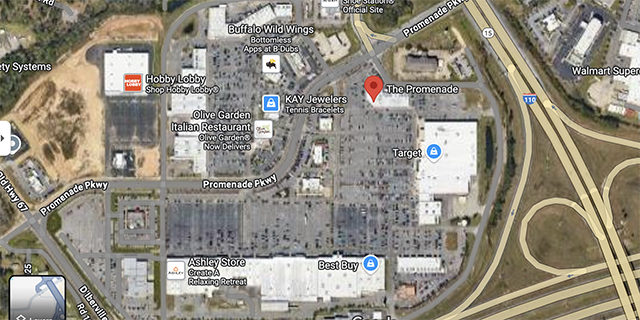Why employee engagement is key to retention after mergers and acquisitions
Published 3:00 pm Tuesday, July 22, 2025
Why employee engagement is key to retention after mergers and acquisitions
Mergers and acquisitions (M&As) bring opportunities for growth, expansion, and innovation. However, they can also introduce uncertainty and disruption for employees. As an HR leader, you understand that leadership changes, shifting priorities, and evolving job roles can create anxiety about job security and workplace culture.
By taking a people-first approach, you can turn these challenges into opportunities. Organizations that prioritize employee engagement throughout the M&A process can drive a smoother transition, retain top talent, and ensure long-term success, WorkTango reports.
How Mergers and Acquisitions Impact Your Employees
M&As aren’t just about financials and operations … they’re about people. The success of an M&A depends on whether employees feel supported, informed, and engaged throughout the process.
Trending
Below is a comparison of the negative impacts when engagement is ignored versus the benefits of prioritizing engagement:

WorkTango
By prioritizing engagement, organizations can minimize uncertainty, improve retention, and create a smoother transition for employees.
The Role of Employee Engagement in Retention
Employee engagement plays a key role in keeping talent during mergers and acquisitions. When employees feel disconnected and unsure about their future, they are more likely to seek stability elsewhere. A study by McKinsey & Company found that one of the biggest reasons employees leave during M&As is a lack of trust in leadership and poor communication about their role in the new organization. By building trust and providing clear guidance, organizations can help employees feel more secure and committed to staying.
Why Employee Engagement is Key to an Effective Merger and Acquisition
Employee engagement is more than just a retention strategy—it’s essential for a smooth transition. 70% of organizations report that engagement positively impacts retention, and 96% of HR leaders believe there is strong evidence linking engagement to performance.
When employees are engaged, they:
- Adapt more quickly to change.
- Trust leadership and remain committed.
- Stay focused and productive.
- Are less likely to leave, reducing regrettable turnover and attrition.
Trending
Organizations focusing on employee engagement during mergers and acquisitions create a more stable and productive work environment. Employees who feel informed and supported are more likely to stay motivated and contribute to the organization’s success.
According to Cornerstone OnDemand, maintaining employee engagement during M&As is essential to preventing disruption and fostering long-term success.
Strategies for Retaining Talent During M&As
Tracking employee engagement is a good start, but it’s not enough on its own. You need to take real action to ensure employees feel supported and valued. During mergers and acquisitions, a well-planned engagement strategy can mean the difference between keeping your top talent or losing them due to uncertainty and stress.
- Listen to employee feedback — and act on it
Your employees want to be heard, especially during uncertain times. Surveys, feedback meetings, and one-on-one check-ins provide valuable insights into their concerns. However, listening alone isn’t enough — taking action on feedback reassures employees that their voices matter.Employee surveys are particularly useful for managing change. They can help your organization identify trends, address pain points, and make data-driven decisions that foster trust and transparency. This article explores how employee surveys support successful change management in greater depth.
- Communicate transparently and consistently
Uncertainty grows when employees feel left in the dark. Share regular updates about the merger process, company goals, and changes. Transparency reduces uncertainty and keeps employees informed and engaged. Even if all details aren’t finalized or ready to share, providing updates on what you can builds trust and confidence in leadership.
- Support emotional well-being
M&As can be overwhelming and stressful for employees across every level of your organization. Providing mental health resources, coaching, or wellness programs can help employees manage stress and stay engaged. One way to promote well-being is by offering incentives to encourage healthy habits and workplace wellness. This approach helps employees stay engaged and motivated during periods of change.
- Clarify roles and expectations
With restructuring comes role changes. Ensure employees understand their role in the new organization, any changes in core responsibilities, and, most importantly, how they fit into the bigger picture.
- Promote career development opportunities
Many employees worry that an M&A will limit their career opportunities. Show them how the transition can open new doors through promotions, expanded roles, or skill development programs.
- Recognize and reward employees
Recognition is essential for maintaining morale. Create an organization-wide recognition strategy publicly acknowledging employees who adapt well to change, contribute to the transition, and demonstrate leadership. Not only will this support engagement and retention, but it will also highlight the type of work and approach that needs to be repeated throughout the organization.
Leveraging technology to prioritize employee engagement
Here’s a look at how technology can support you in making a difference:
- Real-time feedback: Capture employee sentiment instantly, helping leaders identify concerns early and adjust strategies accordingly.
AI-powered insights: Features like AI comment summaries and sentiment analysis surface insights allow you to focus on action planning rather than manual data review. - Direct access for leaders: Don’t be stuck as the in-between leaders and survey data. Take advantage of platforms that offer strong permission settings that allow you to decide what level of access each group requires. Managers hold the closest relationships with their employees and giving them survey access helps them take meaningful action faster.
- Connect feedback to recognition: By integrating your employee feedback and recognition data together, you can answer key questions like: are my disengaged employees being recognized?
Organizations that leverage technology can create a smoother and more supportive experience for employees during M&As, leading to better outcomes for everyone. Platforms like WorkTango, for example, offer AI-powered insights and real-time feedback to help leaders track engagement and address concerns proactively. These tools enable organizations to foster transparency, improve communication, and ultimately support employees through the complexities of an M&A transition.
The Bottom Line
M&As can be challenging, but they don’t have to disrupt your workforce. When you prioritize engagement through clear communication, recognition, and career growth opportunities, you create a smoother transition and retain your top talent.
When employees feel valued and supported, they are more likely to stay, contribute, and help drive your organization forward, even during times of change.
This story was produced by WorkTango and reviewed and distributed by Stacker.
![]()






